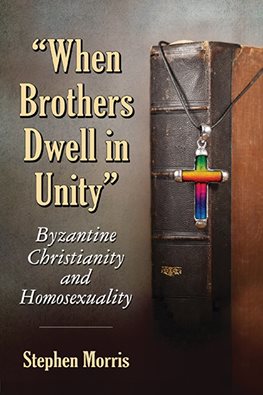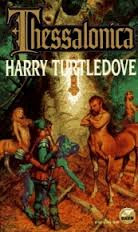Tag Archives: Byzantium
When Brothers Dwell in Unity
I have just learned that my study of Byzantine attitudes toward homosexuality, to be published by McFarland in the Fall-Winter of 2015, is now available for pre-order here!
As McFarland says on their site,
“In the world of early Byzantine Christianity, monastic rules acknowledged but discouraged the homosexual impulses of adult males. The admission of adolescent males as novices was forbidden. John Chrysostom, the archbishop of Constantinople (397–407), virulently denounced homosexuality but was virtually the only Byzantine cleric to do so. Canonical prohibitions of anal sex distinguish among eight possible sexual pairings, the most offensive being a husband-wife, the least offensive being two unrelated males. Other forms of male-male sex were considered little more than masturbation.
Penances traditionally attached to heterosexual sins—including remarriage after divorce or widowhood—have always been much more severe than those for a variety of homosexual acts or relationships. Just as Byzantine churches have found ways to accommodate sequential marriages and other behavior once stridently condemned, it is possible for Byzantine Christianity to make pastoral accommodations for gay relationships.”
I will be sure to let you know more as the release date gets closer!
Thessalonica, by Harry Turtledove
This alternate history, Thessalonica, recounts how George, a simple shoemaker who lives in Thessalonica in the 7th century A.D., attempts to rescue his home city from historical invaders. George is a Christian, as are most of the city’s residents, but remnants of the old pagan religion and its creatures are known to still exist in the hills. George happens upon a satyr, who warns him of a new danger approaching Thessalonica. The danger turns out to be the invading Avars and Slavs, who have at their command bats with gleaming red eyes who dive on the soldiers who patrol the city walls and giant wolves whose howls chill the souls of the besieged. Rumors of worse threats abound as well, such as the fire goddess the invaders can summon. Even the satyr, nymphs, centaurs, and other remnants of the Greek pantheon lurking in the mountains around Thessalonica are frightened.
Within days the city is surrounded, and though the strength of their Christian God enables the population to keep the warriors at bay, George realizes they may need additional help to finally defeat their enemy. With the help of the pious Priest Luke, George convinces the satyrs and centaurs to come to the aide of Thessalonica.
This alternate history of the Byzantine Christian interaction with the Slavs and other pagans of the 7th century is wonderfully written and I am happy to recommend it!


